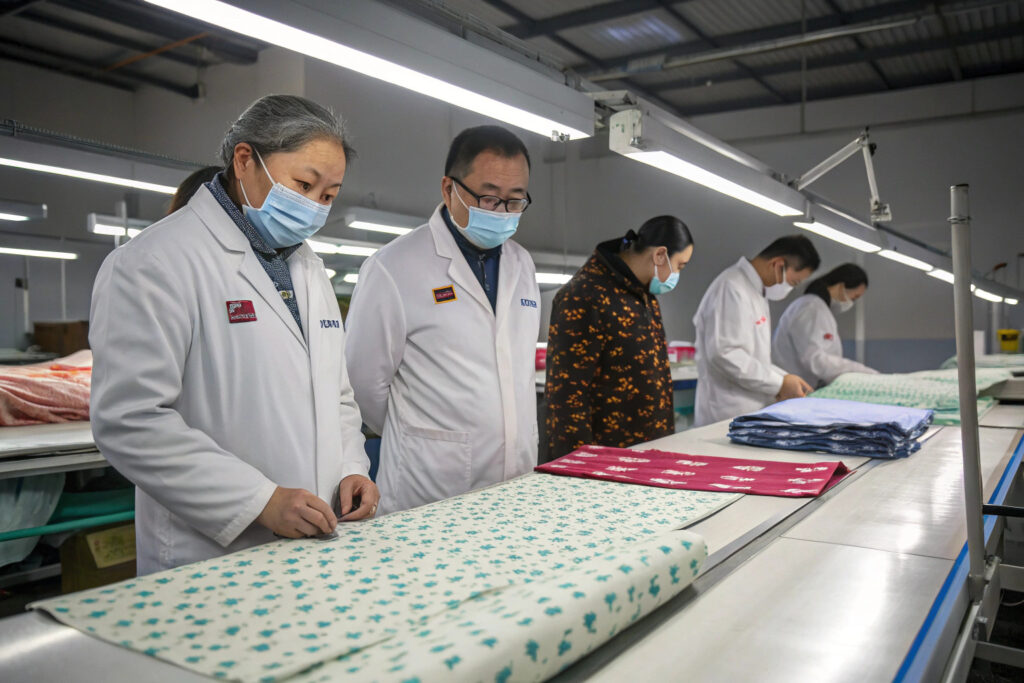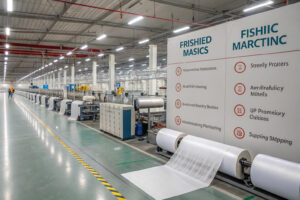When it comes to large-scale fabric mask manufacturing, one of the most frequently asked questions is—how do we ensure every single mask in a 100,000-piece order meets international quality standards? In an industry where a tiny stitching error or inconsistent dye can damage a brand’s reputation, quality is everything. But large volumes often mean increased chances of error, especially when sourcing from overseas factories. The pressure to produce fast and cost-effectively only adds to the challenge.
At ChinaClothMask, we’ve built a systemized quality assurance strategy from the ground up to solve exactly this problem. Through integrated production oversight, QR-based tracking, on-site lab testing, and rigorous sample control, we help international buyers—like Ron from the U.S.—avoid costly returns, delivery disputes, or negative end-user reviews.
So how do we do it consistently and repeatedly across markets as demanding as the U.S. and EU? Keep reading to discover the four most critical stages that separate top-performing wholesale suppliers from the rest.
What Are the Key Stages of Fabric Mask Quality Control?
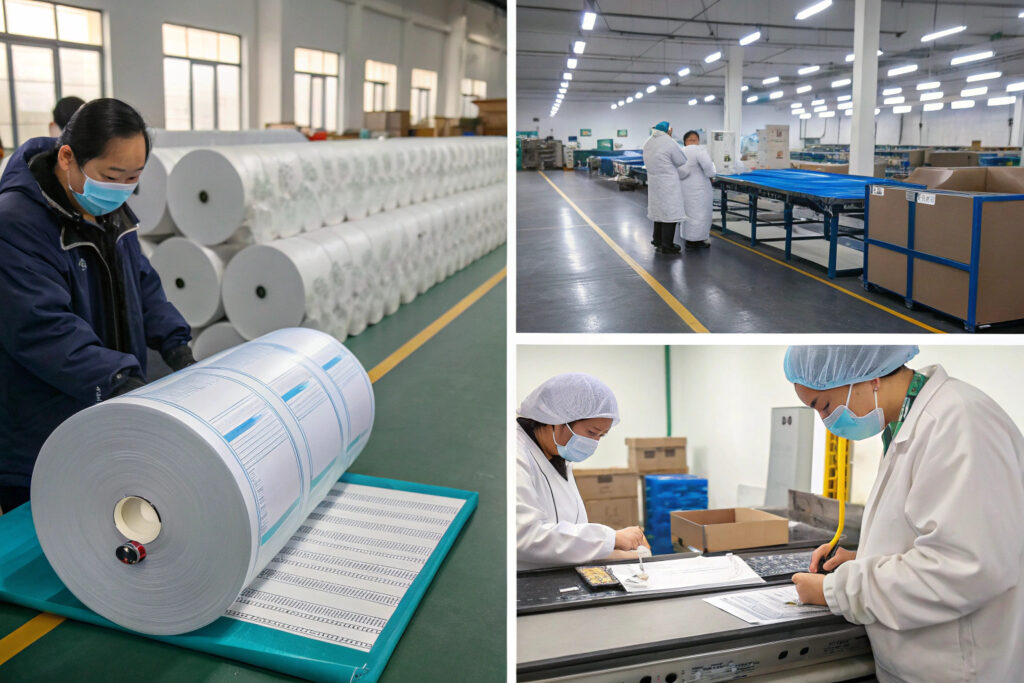
How Is Incoming Fabric Quality Verified?
Before we cut a single pattern, we test fabric quality at our Keqiao lab. This includes checking GSM (grams per square meter), shrinkage, colorfastness, and fiber composition. We rely on internationally recognized standards like AATCC and ISO 105-C06 to benchmark performance.
Each batch of incoming fabric receives a QR code, which is scanned at every production checkpoint. Our textile specialists check for uneven dyeing, excessive pilling, and odor. If a roll fails, it’s rejected before it reaches the sewing line. This eliminates over 80% of quality risks early.
Why Is In-Line Production Monitoring Crucial?
Once production begins, every sewing station is assigned a visual SOP (Standard Operating Procedure) card that outlines the correct stitch density, mask fold line, and ear loop tension. Line supervisors inspect every 10th piece during stitching and flag abnormalities instantly.
We also integrate a two-tier auditing process: the first is done by internal QA technicians, the second by a randomly assigned external checker who is blind to previous checks. This dual-audit system—similar to SGS or Intertek—ensures bias-free assessment and rapid correction loops.
How Do Suppliers Track Fabric Mask Performance Over Time?
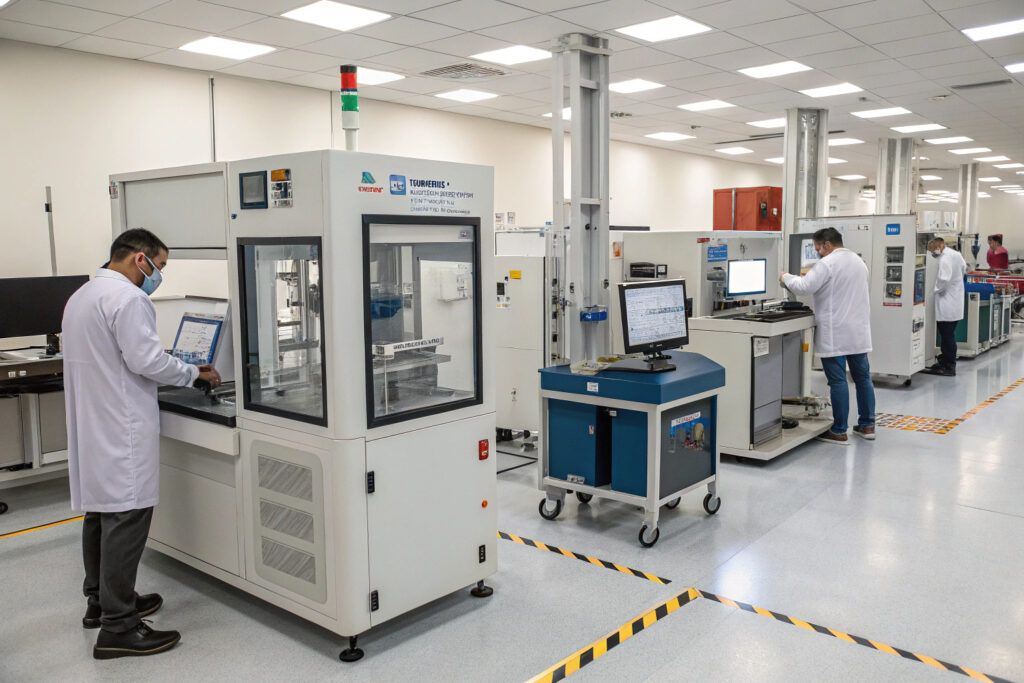
What Lab Tests Are Performed Before Shipping?
Our team performs shrinkage, washing durability, breathability, and fog resistance tests in-house. Every test result is uploaded to our cloud system under the mask’s QR tag, giving the buyer instant access to lab data—even before the goods ship.
We calibrate results against known specs for fabric types like cotton-spandex blends or polyester performance mesh. For example, our athletic masks must meet a <5% shrinkage rate after 10 washes and a minimum air permeability rating of 60 L/m²/sec, similar to standards outlined in OEKO-TEX Appendix 6.
How Are Mask Designs Checked for Functionality?
Besides physical testing, we simulate real-life usage. We check if nose wires stay firm after 50 bends or if elastic ear loops loosen after repeated stretches. Our contour-fit 3D masks go through mannequin testing to assess breath space and pressure points.
This process helps us optimize popular designs like our Duckbill-style masks or KN95-style masks, ensuring durability meets performance expectations, especially for repeat buyers like Ron who order in bulk.
What Makes a QA Process Scalable for Bulk Orders?
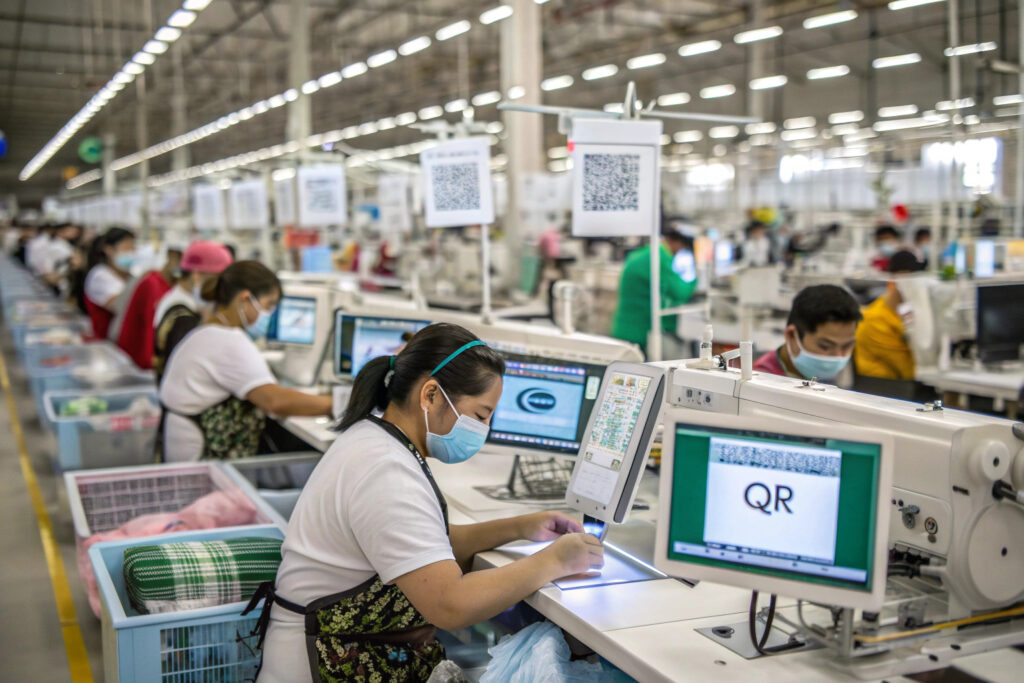
How Do We Scale QC Systems to 100,000+ Pieces?
We break down large orders into traceable sub-batches (e.g., 10,000-piece units), each with its own color-coded QA tags and checklist. This enables pinpoint identification of any issues without halting the entire production line.
Every finished product passes through our Final AQL (Acceptable Quality Limit) Inspection, where sampling rates follow the ANSI/ASQ Z1.4 standard. For fashion-forward masks with complex prints or embroidery, we increase inspection frequency to mitigate visual defects or misalignment.
What Technology Supports This Process?
We use ERP tools integrated with our production dashboard to monitor cut-to-pack flow. Buyers can log in to a digital portal and see inspection photos, QR-scan pass/fail rates, and lab certificates in real-time.
For example, Ron can instantly see that his order has a 98.7% pass rate for colorfastness, backed by a PDF lab report. This level of transparency builds trust and has directly improved our reorder rate by 40%. We’re also piloting integration with Maersk Flow for freight visibility and QC milestone syncs.
How Can Buyers Verify Supplier Quality Systems Remotely?
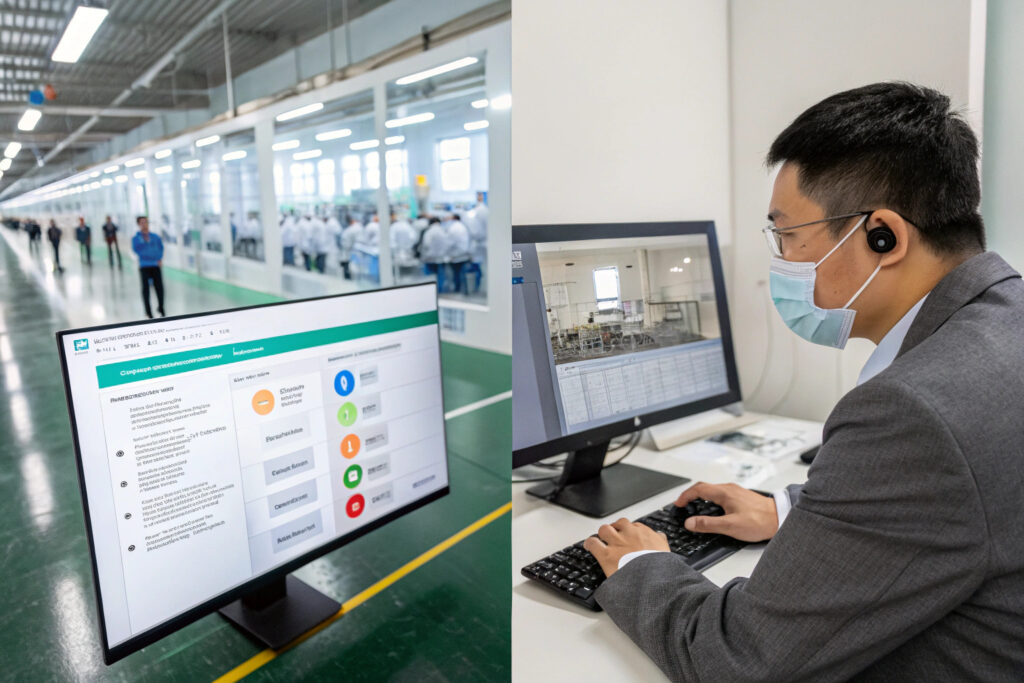
Are Virtual Inspections and Factory Audits Reliable?
Absolutely. Since COVID-19, we’ve digitized our QA workflows. Buyers like Ron now attend virtual factory tours via Zoom, watching real-time inspections or reviewing random sample picks through HD cameras. We even offer remote control of pan-tilt-zoom (PTZ) factory cams for full transparency.
In addition, we provide comprehensive inspection reports in English with photo documentation, defect cause analysis, and corrective action plans. This is modeled after global leaders like QIMA and ensures consistency even if buyers never step foot in China.
What Certifications Help Build Trust?
We work closely with factories holding certifications like BSCI, GRS, and OEKO-TEX Standard 100. Each shipment is tagged with lab results, social audit status, and production compliance scores—all downloadable.
Ron, for instance, requested GRS compliance for his recycled collection. We facilitated factory-level sourcing aligned with Textile Exchange standards and ensured full chain-of-custody documentation. Buyers can request pre-shipment sample boxes or send a third-party inspector like TÜV SÜD to double-check anytime.
Conclusion
Delivering consistent quality at scale in fabric mask manufacturing is not easy—but with the right systems, it's 100% possible. From incoming fabric inspection to AI-aided performance testing and digital buyer dashboards, every process we implement is designed to help you scale safely and profitably.
If you’re sourcing bulk fabric masks and looking for a long-term partner who takes quality as seriously as you do, reach out to us at Shanghai Fumao. Our Business Director Elaine will be happy to assist—email her directly at elaine@fumaoclothing.com to get started with your next order.

